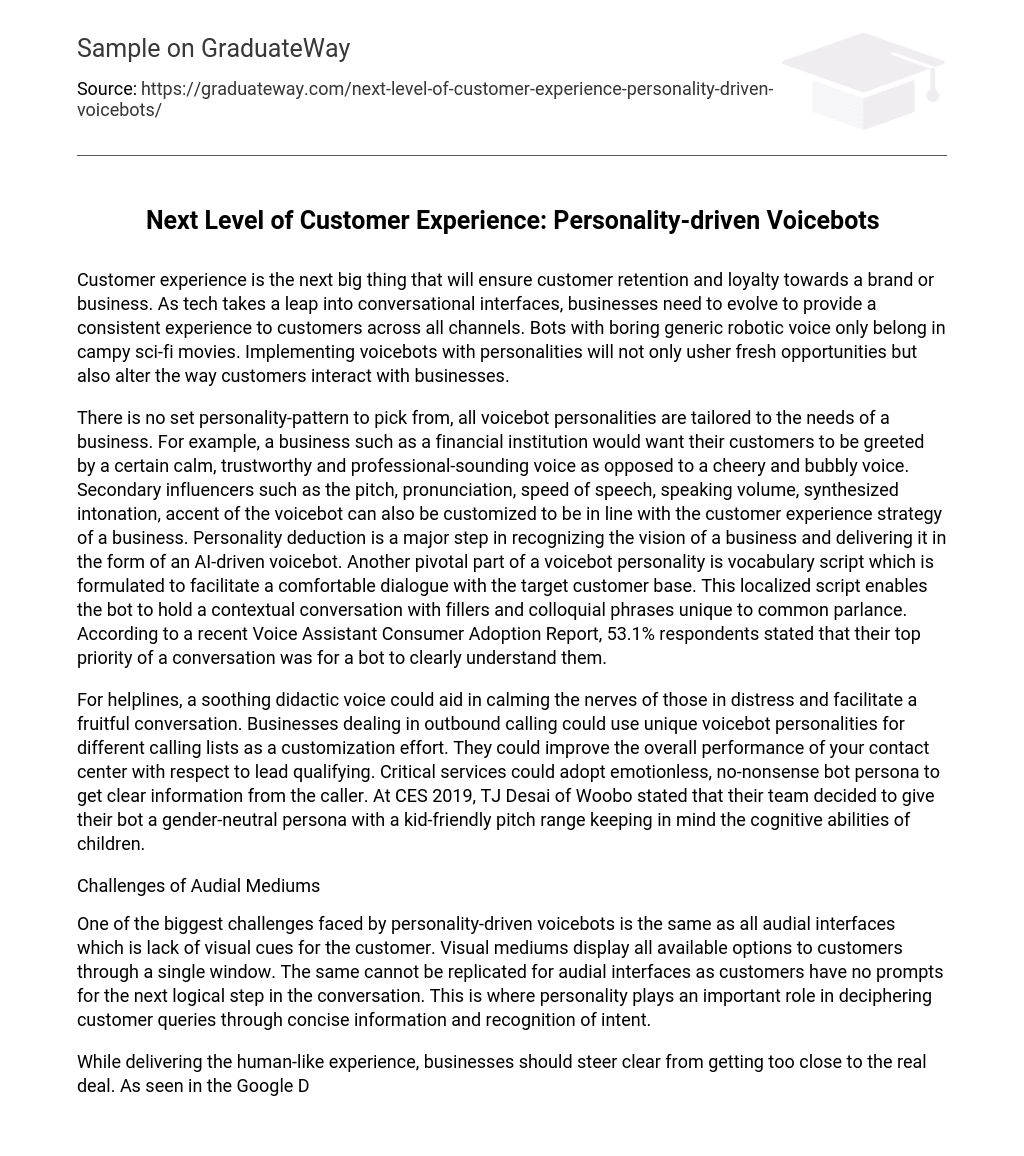Customer experience is the next big thing that will ensure customer retention and loyalty towards a brand or business. As tech takes a leap into conversational interfaces, businesses need to evolve to provide a consistent experience to customers across all channels. Bots with boring generic robotic voice only belong in campy sci-fi movies. Implementing voicebots with personalities will not only usher fresh opportunities but also alter the way customers interact with businesses.
There is no set personality-pattern to pick from, all voicebot personalities are tailored to the needs of a business. For example, a business such as a financial institution would want their customers to be greeted by a certain calm, trustworthy and professional-sounding voice as opposed to a cheery and bubbly voice. Secondary influencers such as the pitch, pronunciation, speed of speech, speaking volume, synthesized intonation, accent of the voicebot can also be customized to be in line with the customer experience strategy of a business. Personality deduction is a major step in recognizing the vision of a business and delivering it in the form of an AI-driven voicebot. Another pivotal part of a voicebot personality is vocabulary script which is formulated to facilitate a comfortable dialogue with the target customer base. This localized script enables the bot to hold a contextual conversation with fillers and colloquial phrases unique to common parlance. According to a recent Voice Assistant Consumer Adoption Report, 53.1% respondents stated that their top priority of a conversation was for a bot to clearly understand them.
For helplines, a soothing didactic voice could aid in calming the nerves of those in distress and facilitate a fruitful conversation. Businesses dealing in outbound calling could use unique voicebot personalities for different calling lists as a customization effort. They could improve the overall performance of your contact center with respect to lead qualifying. Critical services could adopt emotionless, no-nonsense bot persona to get clear information from the caller. At CES 2019, TJ Desai of Woobo stated that their team decided to give their bot a gender-neutral persona with a kid-friendly pitch range keeping in mind the cognitive abilities of children.
Challenges of Audial Mediums
One of the biggest challenges faced by personality-driven voicebots is the same as all audial interfaces which is lack of visual cues for the customer. Visual mediums display all available options to customers through a single window. The same cannot be replicated for audial interfaces as customers have no prompts for the next logical step in the conversation. This is where personality plays an important role in deciphering customer queries through concise information and recognition of intent.
While delivering the human-like experience, businesses should steer clear from getting too close to the real deal. As seen in the Google Duplex fiasco, developing nuances of dialogue to a point where the line between man and machine is blurred could be unsettling for your customers. At all times they should be informed about who they’re interacting with to avoid unsavory encounters. Voice is not a limitation when you create a personality around it to provide a unique experience to your consumers.





